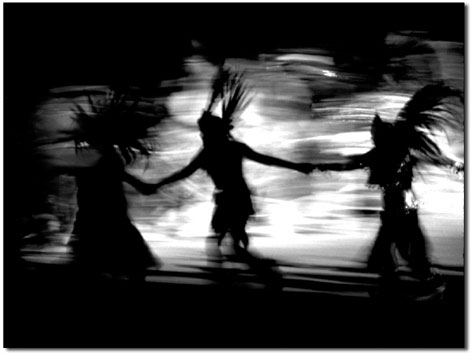|
|
||
|
A diamond in the sand
by Judith Reynolds om Bartels’ stirring film, “Spirit of the Southwest,” begins and ends with the most important photographic image of the modern era: planet Earth as seen from space. It’s an appropriate framing device for this beautiful movie. Like other passionate environmentalists, Bartels understands that our home, the Four Corners region, is but a small part of a larger universe, s of time. Organized into seven sections, “Spirit” begins with a prologue of great simplicity. We see earth as if from a space capsule. A blue marble adrift in a black void, earth is ringed with white clouds, barely revealing the shape of North America. And then the camera passes by into darkness. A dramatic shift brings us close to wind-swept water, and we hear the voice of narrator John Sieber. He says only five words while corresponding images unfold: “water, air, fire, earth,” and “time.” Time is represented by an outcropping in the Colorado Plateau. And so we find ourselves in familiar territory, and the story begins. Tightly structured and illuminated by Bartels’ spectacular photography, the film spins quickly through several thematic sections. The overall dramatic arc leads to a lyrical highlight, plunges into harsh realities, and concludes on an optimistic note. Bartels eases into each new section without fanfare and employs a variety of techniques such as tempo changes, blackouts, voiceovers, a single sound effect or a musical shift to create his transitions. Remarkably, he skims through geological time, which merges nicely into the arrival of the first human beings. Narration is kept to a minimum, allowing Bartels’ images to speak for themselves. In what I would call part three, we meet the first of three storytellers, Esther Martinez – Tewa. Martinez speaks as an elder, telling her tale of indigenous people and their legacy: a reverence for and ability to live in harmony with nature. With the twin themes of time and change always in mind, Bartels treats the next section, the 16th-century European conquest of the American West, with extreme brevity. With more detail he explores the impact of 19th-century occupation and Westward expansion. Advancing the frontier is the longest section and incorporates two more storytellers, Paul Ramsey and Eldon Zwicker. Each man tells a first-person account of what it was like to be a young miner or cattleman in a wildly expanding country. We get a brief glimpse of each storyteller, but it’s Bartels’ skillful integration of period photographs with contemporary images that gives the stories particular pungency. Throughout, subtle music supports the narrative ranging from Native American flute-and-drums to Western guitar-and-fiddle and the eerie sounds of space. Nature’s sounds, birdsong, rushing wind, water, or the squeak of a cabin door, lightly punctuate the storyline. The poetic highlight arrives in a section on nature. A thunderclap signals a cascade of images of streams, waterfalls, mountains, wildflowers, animals, and brief glimpses of a setting sun. The musical accompaniment (violinist Eric Hokkanen) poignantly reaches an emotional peak as a close-up of one flower turns into a field of mountain yellow. It’s here the film turns dark as Bartels transitions into the modern era with a quote from Wallace Stegner: “Like wind and sunsets, wild things were taken for granted.” And so begins the story of urban sprawl, pollution, waste and the many other environmental challenges we face today. Another dramatic break signals the final section. A sudden blackout introduces the voice of a NASA transmission. Then more spectacular space scenes unfold as an American astronaut describes his experience of seeing continents without borders. With considerable skill, Bartels waits until this late moment to lay bare the film’s central premise: Life is sacred. By now, the point has been made in the strongest possible visual terms. And Bartels wraps things up by reprising the voices of his storytellers as we see young people studying, enjoying and caring for the natural world. Sieber closes with another classic Stegner quote about the West: “This is the native home of hope.” Maybe we’ll “create a society to match the scenery.” Bartels’ film is an unexpected gem, an aesthetic counterpart to Al Gore’s “An Inconvenient Truth.” If you have guests this summer, take every one of them to “Spirit of the Southwest.” It’s a fine introduction to our corner of the planet. •
|
In this week's issue...
- September 11, 2025
- Back on top
After harrowing flying accident, local highliner steps back out with renewed mission
- September 11, 2025
- New order
Rule change for Land and Water Conservation Fund raises alarms
- September 4, 2025
- Armed with knowledge
Local community organizers work to ensure immigrant neighbors know their rights


